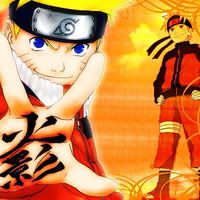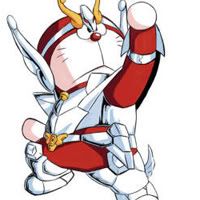History of Manga part IV
Thursday, June 4, 2009
Tezuka and Hasegawa were also both stylistic innovators. In Tezuka's "cinematographic" technique, the panels are like a motion picture that reveals details of action bordering on slow motion as well as rapid zooms from distance to close-up shots. This kind of visual dynamism was widely adopted by later manga artists. Hasegawa's focus on daily life and on women's experience also came to characterize later shōjo manga.
Between 1950 and 1969, increasingly large audiences for manga emerged in Japan with the solidification of its two main marketing genres, shōnen manga aimed at boys and shōjo manga aimed at girls. Up to 1969, shōjo manga was drawn primarily by adult men for young female readers.
Two very popular and influential male-authored manga for girls from this period were Tezuka's 1953-1956 Ribon no Kishi (Princess Knight or Knight in Ribbons) and Matsuteru Yokoyama's 1966 Mahōtsukai Sarii (Little Witch Sally). Ribon no Kishi dealt with the adventures of Princess Sapphire of a fantasy kingdom who had been born with male and female souls, and whose sword-swinging battles and romances blurred the boundaries of otherwise rigid gender roles. Sarii, the pre-teen princess heroine of Mahōtsukai Sarii, came from her home in the magical lands to live on Earth, go to school, and perform a variety of magical good deeds for her friends and schoolmates.Yokoyama's Mahōtsukai Sarii was influenced by the U.S. TV sitcom Bewitched, but unlike Samantha, the main character of Bewitched, a married woman with her own daughter, Sarii is a pre-teenager who faces the problems of growing up and mastering the responsibilities of forthcoming adulthood. Mahōtsukai Sarii helped create the now very popular mahō shōjo or "magical girl" subgenre of later manga. Both series were and still are very popular.
[edit] Shōjo manga
In 1969, a group of women mangaka later called the Year 24 Group (also known as Magnificent 24s) made their shōjo manga debut (year 24 comes from the Japanese name for 1949, when many of these artists were born). The group included Hagio Moto, Riyoko Ikeda, Yumiko Oshima, Keiko Takemiya, and Ryoko Yamagishi[20] and they marked the first major entry of women artists into manga. Thereafter, shōjo manga would be drawn primarily by women artists for an audience of girls and young women.
In 1971, Ikeda began her immensely popular shōjo manga Berusaiyu no Bara (The Rose of Versailles), a story of Oscar François de Jarjayes, a cross-dressing woman who was a Captain in Marie Antoinette's Palace Guards in pre-Revolutionary France. In the end, Oscar dies as a revolutionary leading a charge of her troops against the Bastille. Likewise, Hagio Moto's work challenged Neo-Confucianist limits on women's roles and activities as in her 1975 They Were Eleven, a shōjo science fiction story about a young woman cadet in a future space academy.
These women artists also created considerable stylistic innovations. In its focus on the heroine's inner experiences and feelings, shōjo manga are "picture poems" with delicate and complex designs that often eliminate panel borders completely to create prolonged, non-narrative extensions of time. All of these innovations – strong and independent female characters, intense emotionality, and complex design – remain characteristic of shōjo manga up to the present day.









0 comments: to “ History of Manga part IV ”
Post a Comment